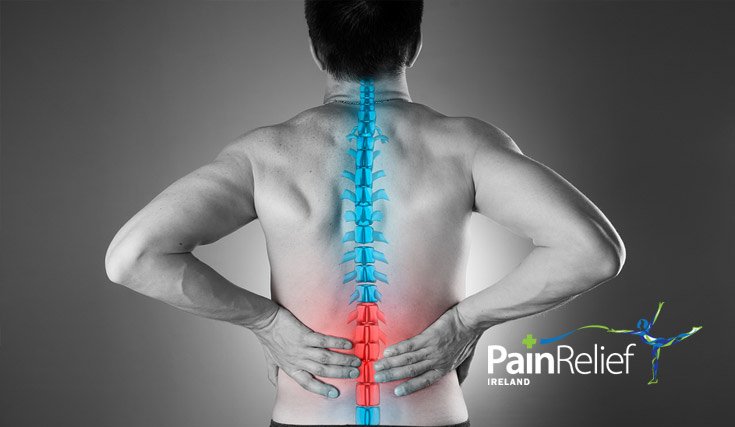
Facts
About 80% of adults experience low back pain at some point in their lifetimes. It is the most common cause of job-related disability and a leading contributor to missed work days. In 2010 Global Burden of Disease Study estimated that low back pain is among the top 10 diseases world.
Dr. Dominic Hegarty (Clinic Director Pain Relief Ireland) spoke with Maura and Daithí on the Today Show (RTE: 19th February 2020) about what causes low back pain to persist, what can be done to treat and prevent recurrence of low back pain.
What is Low Back Pain?
The vast majority of low back pain is mechanical in nature.
A spectrum of disease exists which can be based on the duration of the symptoms.
- This is usually self-limiting and settles with no long-term impact
- This is more troublesome and requires physiotherapy, prolong analgesics and the individual is usually limited in what they can do including work and leisure activity.
- This is where the severity has reduce but it continue to impacts on an individual’s quality of life, often keeping people of work, requiring oral analgesics.
Do we know what causes lower back pain (LBP)?
The 3 top regions that cause LBP include:
- Disc is one of the most common mechanical causes of low back pain. As the discs deteriorate, they lose their cushioning ability.
- Herniated or ruptured discs / Radiculopathy is a condition caused by compression, inflammation and/or injury to a spinal nerve root. Pressure on the nerve root results in pain, numbness, or a tingling sensation that travels or radiates to other areas of the body that are served by that nerve. Radiculopathy may occur when spinal stenosis or a herniated or ruptured disc compresses the nerve root.
- Herniated or ruptured discs / Radiculopathy is a condition caused by compression, inflammation and/or injury to a spinal nerve root. Pressure on the nerve root results in pain, numbness, or a tingling sensation that travels or radiates to other areas of the body that are served by that nerve. Radiculopathy may occur when spinal stenosis or a herniated or ruptured disc compresses the nerve root.
- Sprains and strains account for most acute back pain. Sprains are caused by overstretching or tearing ligaments, and strains are tears in tendon or muscle. Both can occur from twisting or lifting something improperly, lifting something too heavy, or overstretching. Such movements may also trigger spasms in back muscles, which can also be painful.
- Facet Joint Disease often forgotten about but can contribute to >50% symptoms
Other cause that may need to be excluded include infection / cancer / osteoporosis / spinal injury.
Are there specific risk factors?
- Age: 35-55 years show peak in the injury. The intervertebral discs begin to lose fluid and flexibility with age, which decreases their ability to cushion the vertebrae.
- Genetics
- Fitness level
“Weekend warriors”—people who go out and exercise a lot after being inactive all week—are more likely to suffer painful back injuries than people who make moderate physical activity a daily habit. - Weight gain: Being overweight, obese, or quickly gaining significant amounts of weight can put stress on the back and lead to low back pain.
- Occupational risk factors
If someone attends a pain clinic for low back pain what can they expect ?
- They will be asked for a description of the pain ( intensity / pattern)
- The will be examined looking for areas that can be casing
- Investigations such as MRI of spine, CT, Blood tests, bone scan are considered
If symptoms are present for over 6 months and still impacting on quality of life then majority will be offered a procedure.
If you suffer lower back pain that is persisting and not responding to basis treatment then you should be reviewed by an pain physician experienced in diagnosing and treating lower back pain. Contact Pain Relief Ireland to make an appointment and get your life back in control.










